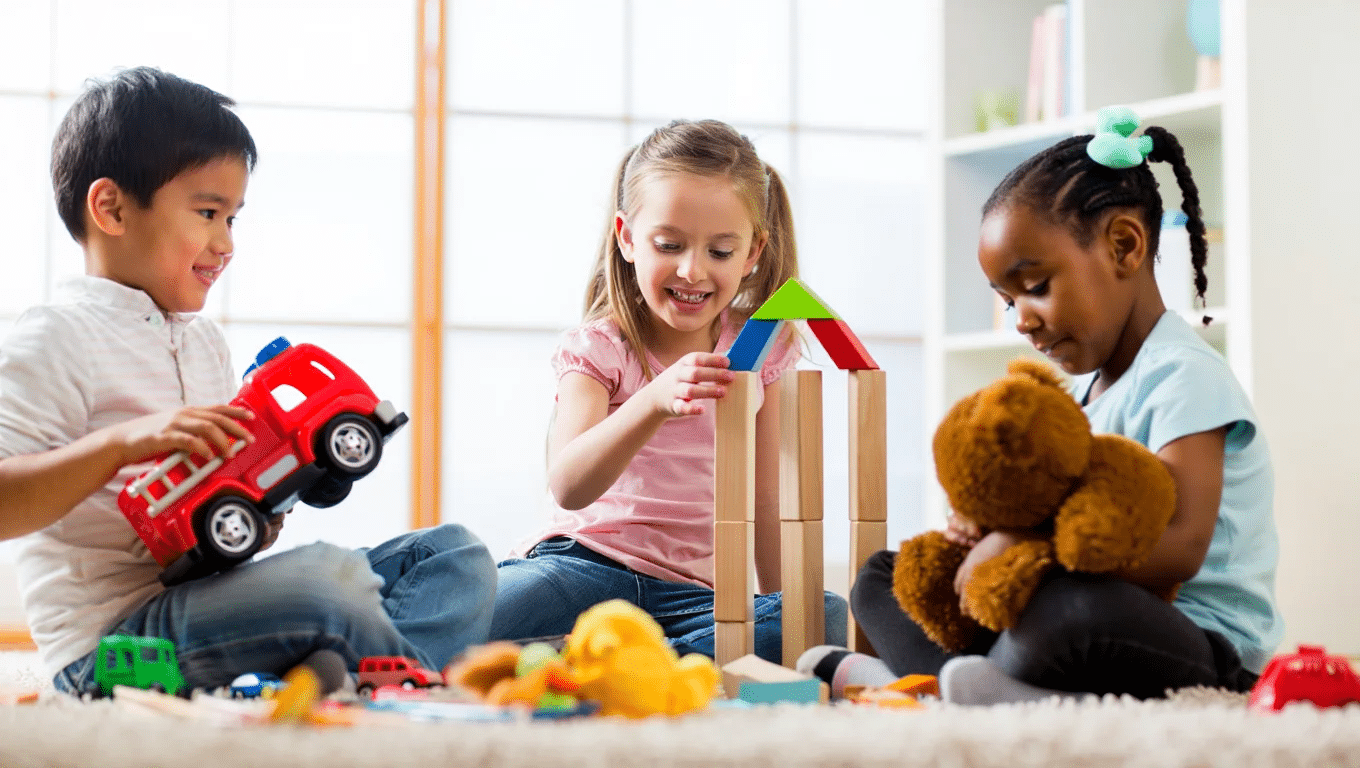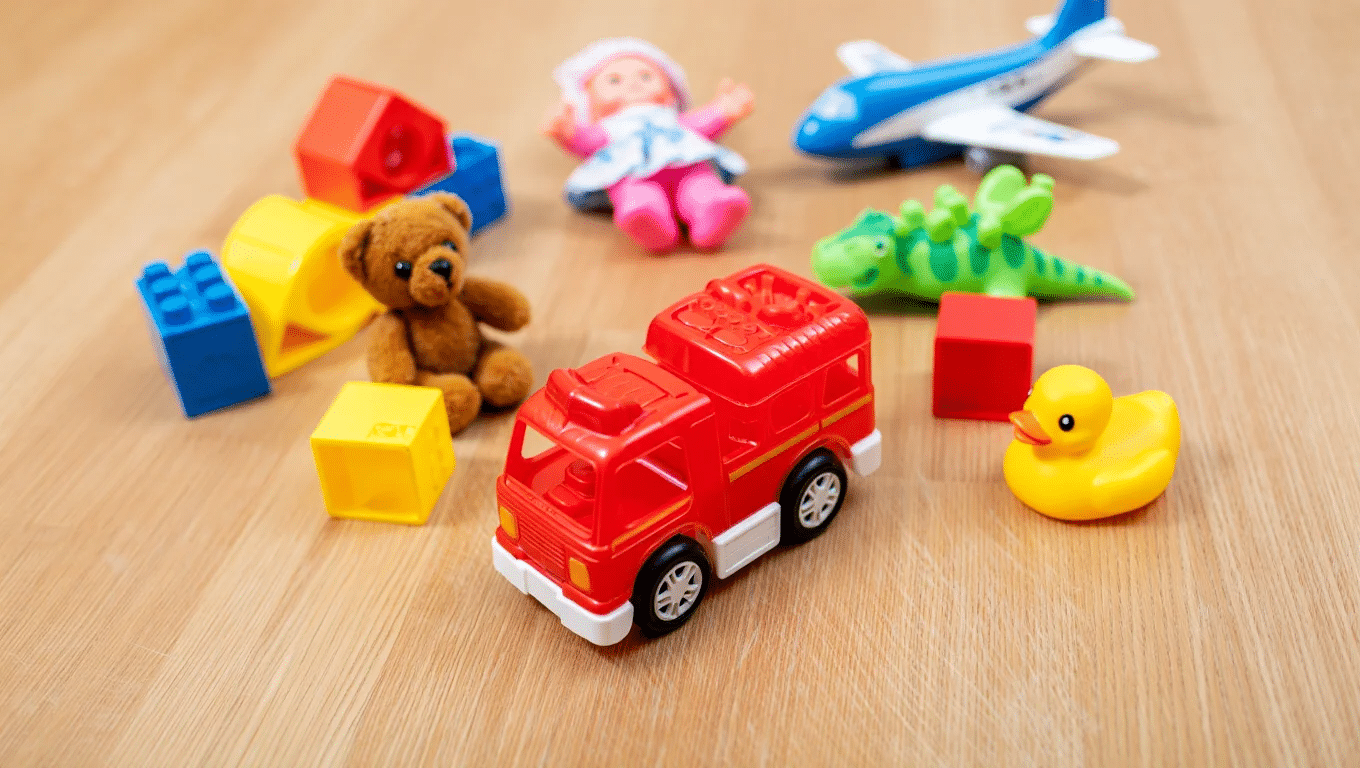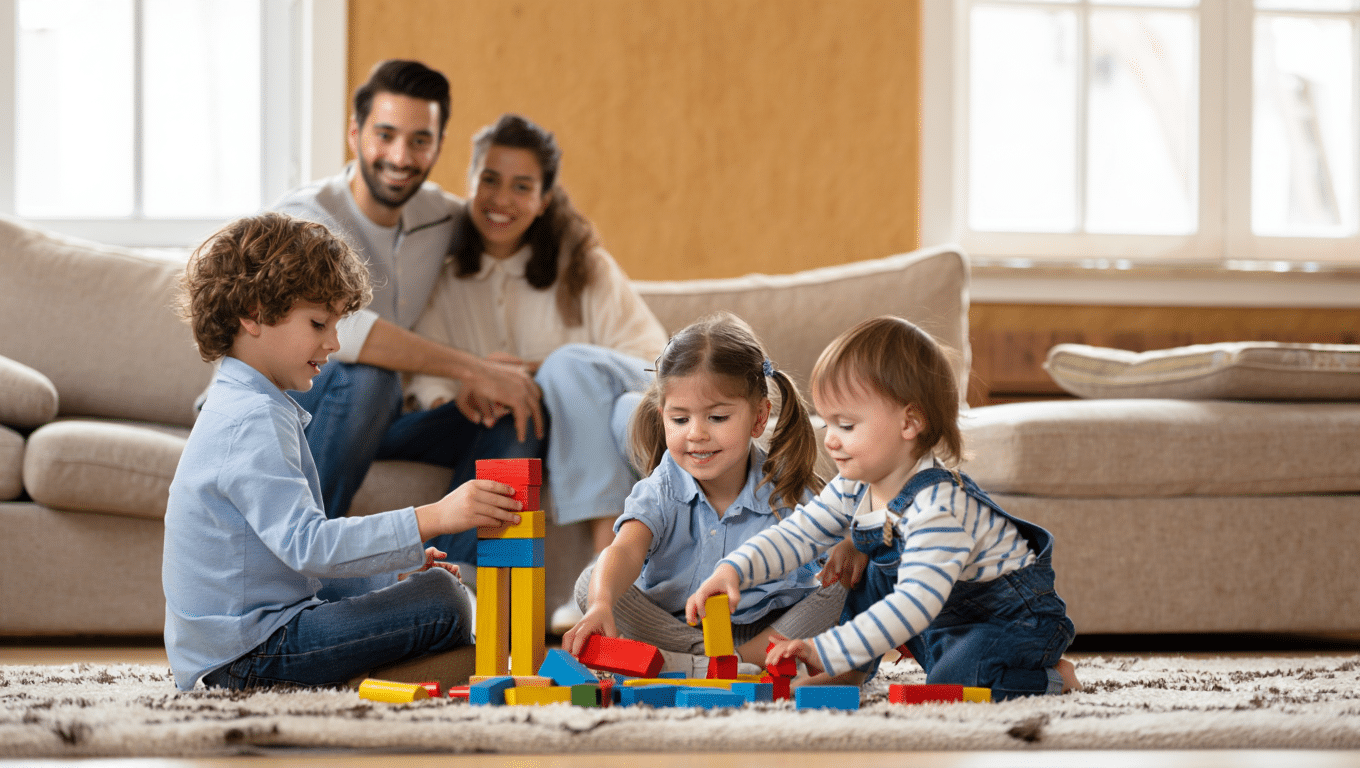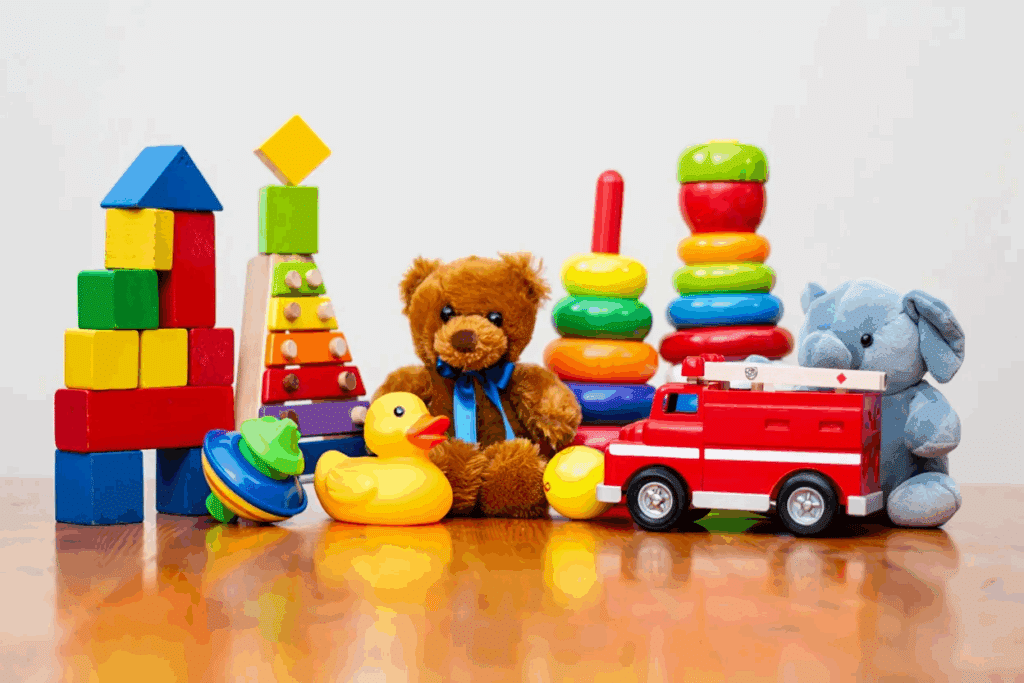Parents often face a common problem: toys get boring fast. Kids play with new items for a few days, then lose interest. The floor becomes a mess of ignored playthings while children claim they have “nothing to do.”
A toy rotation system can fix this issue. By creating a method where only some toys are available at once, you’ll see more focused play, less clutter, and kids who use what they have.
This blog will show you how to set up an effective toy system for your family. You’ll learn how to group toys, create a rotation schedule, and watch for signs it’s time to switch things up.
Happier kids, a cleaner home, and more value from the toys you already own.
Why Use a Toy Rotation System for Kids?

Many families struggle with toy overload. Kids get bored easily despite having plenty of options but asmart rotation plan helps both kids and parents make the most of playtime without constant shopping.
The following are a few benefits of the rotation system:
- Longer attention spans: With fewer options, kids focus better on the toys they have
- More creative play: Limited choices lead to finding new ways to use the same toys
- Less cleanup: Fewer toys out means less mess to manage each day
- Toys feel “new” again: When items return after being stored, kids show fresh interest
- Money savings: You’ll buy fewer toys when kids fully use what they have
- Better organization: Your home stays tidier with a proper system
- Less overwhelm: Too many toys can cause stress; rotation creates calm
- More respect for belongings: Children learn to value what they have
Implementing the Toy Rotation System

Creating a toy rotation system takes a bit of planning but offers huge benefits. When done right, both parents and kids gain from this method. The following steps will help you create a system that works for your family situation.
Step 1: Declutter and Sort Toys
Start by gathering all toys in one place. Remove broken items and those your child has outgrown. Group similar toys together building blocks, art supplies, puzzles, pretend play items, etc.
This helps you see what you have and makes planning rotations easier. Consider donating extras that aren’t used often.
Step 2: Choose a Rotation Schedule
Decide how often to switch toys – weekly, biweekly, or monthly, based on your child’s age and play habits. Younger kids might need more frequent changes. Mark rotation days on your calendar to stay consistent. A regular schedule helps children know when to expect new options.
Step 3: Organize Storage
Find containers that work for your space plastic bins, canvas bags, or boxes that stack well.
Label each container clearly. Store out-of-rotation toys in closets or under beds where they’re not visible to children. Good storage makes the process much simpler for parents.
Step 4: Select Toys for Rotation
Choose 8-12 toys for each rotation, depending on your space. Include items from different categories: fine motor, gross motor, creative, pretend play, and educational.
Balance open-ended toys with those having specific purposes. Keep some constant favorites available all the time for comfort.
Step 5: Observe and Adjust
Watch how your child plays with each rotation. Note which toys get the most attention and which are ignored. Ask older children for input about what they’d like next time. Adjust your system based on these observations. The best rotation plans grow with your child’s changing interests.
Common Mistakes to Avoid in a Toy Rotation System
Many parents try toy rotation with good intentions, but miss key steps. Setting up an effective system takes some thought. Kids benefit most when adults avoid some common pitfalls that can limit success.
- Too Many Toys at Once: Keeping too many items out defeats the purpose – limit each rotation to a manageable amount
- Random Grouping: Placing toys together without thinking about how they work as a set
- Forgetting Child Input: Not asking kids which items they want included in the next switch
- Rotation Schedule Too Long: Waiting too many weeks between changes, causing boredom
- Inconsistent System: Starting strong but failing to maintain the regular switches
- Ignoring Play Patterns: Not watching how your child uses toys to inform better groupings
- All-or-Nothing Approach: Putting every single toy into rotation rather than keeping some constant favorites available
- Skipping Documentation: Not tracking which toys were big hits to help plan future rotations
Toy Rotation Tips for Different Ages

Different ages need different approaches for toy rotation. What works for a baby won’t interest a preschooler.
Knowing what to include for each stage helps create a system that grows with your child and keeps them learning.
1. Babies (0–2 Years)
Rotate items with various textures, sounds, and colors. Include rattles, soft books, stacking cups, and simple cause-and-effect toys. Switch toys weekly as babies’ attention spans are short. Keep familiar comfort items constant. Focus on sensory play that builds basic skills.
2. Toddlers (2–4 Years)
Include toys that support growing independence: simple puzzles, blocks, play food, cars, and basic art supplies. Add items that work together for imaginative play. Rotate every 2-3 weeks. Look for toys that help with sorting, matching, and early problem-solving skills.
3. Preschoolers (4–6 Years)
Offer more complex building sets, dress-up items, board games, craft kits, and science tools. Group toys by themes that match current interests. Extend rotations to monthly changes. Include children in the planning process. Add toys that build early reading and math concepts.
The Bottom Line
Toy rotation changes how children play while making parents’ lives easier. This simple system brings back the magic of toys that might otherwise sit forgotten.
By following the steps outlined in this guide, you’ll create a play environment that’s both stimulating and manageable. The key is consistency and observation – watch what works for your unique child.
Remember that toy rotation isn’t about limitation. It’s about creating focus and appreciation. It teaches children to value what they have and to play more deeply.
Start small with just a few bins and basic categories. You can refine your method as you go. The most important thing is to begin.
Your child has amazing potential for creativity and learning. A thoughtful toy rotation system helps them reach it.

















